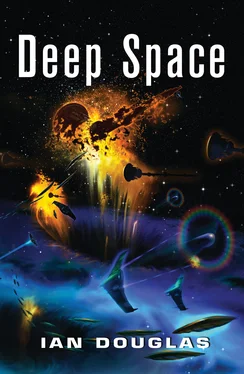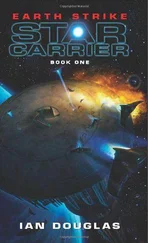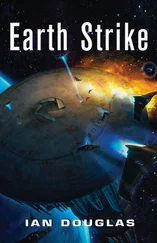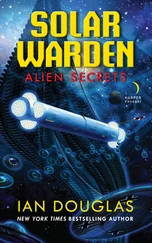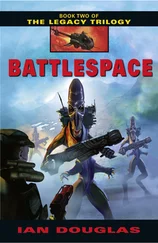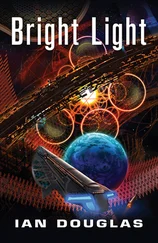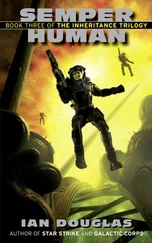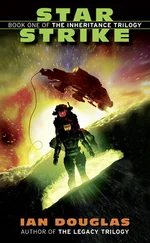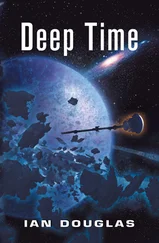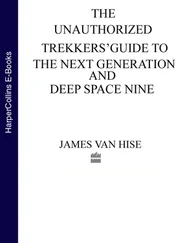Arianrhod offered Confederation xenoplanet specialists the splendid opportunity to study an Earthlike planet still in the final stages of formation. Earth itself must have looked much the same 3.5 to 4 billion years ago. The atmosphere was a poisonous brew of carbon dioxide, methane, nitrogen, and sulfur dioxide. Volcanoes dotted the vast and rolling oceans, and asteroids and comets continued to slam into the young world, generating apocalyptic tidal waves. Silverwheel, most of it, was underground, as was the large USNA naval base protecting it. The land, when it was above water, was rocky, barren, and lifeless.
Yet, despite this, life bloomed in the oceans, raising questions about the nature, variety, and extensiveness of early life in Earth’s seas. It was known that life had appeared in Earth’s seas within a scant few hundred million years of the formation of a solid crust … but that life had remained single-celled and relatively simple for the next 2.5 billion years or so, and hadn’t learned how to manage the multicellular trick until about a billion years ago. Multicellular life forms, some of them as complex as things like colonial jellyfish and free-swimming tunicate worms, had already evolved in Arianrhod’s seas.
Theorists had suggested that life might have evolved not once, but many times on Earth; others suggested that radiation from the planet’s sun had given evolution a swift kick in the ass. Arianrhod offered xenobiologists the unparalleled opportunity to watch the process in action. The planet had been named deliberately for an ancient Celtic goddess of fertility, rebirth, and the weaving of cosmic fate. Someday, in a billion years or so, this world might be another Earth; in the meantime, it offered Humankind an unparalleled chance to study planetary evolution. Silverwheel’s twenty thousand inhabitants were almost all scientists and their families.
The Slan attack had not been entirely unexpected.
Osiris, 70 Ophiuchi AII, had been hit and overrun twenty years ago by a combined Turusch-Nungiirtok assault force. Osiris, though, was one of a handful of so-called garden worlds, planets with oxygen-nitrogen atmospheres and extensive biospheres where humans could live and work without cumbersome biosuits or nanoskins. The government council at Silverwheel had been hoping that the enemy wanted to take over pleasant, Earthlike worlds, not poisonous biomes-in-the-making like Arianrhod. And as year followed year, they’d begun to relax. Arianrhod did not appear to be on the enemy’s target list.
Until now. Unlike the civilian government at Silverwheel, the Navy had long suspected that one or another of the Sh’daar client species would make a grab for 36 Ophiuchi, and deployed three fighter squadrons to defend the system. Two, the Dracos and the Reapers, had been stationed at the naval base protecting Silverwheel, with a third, the Blood Knights, operating out of an orbital base called Caer Gwydion. Picket drones in the outer system had noted the approach of a sizeable naval force two days ago, apparently coming from the general direction of 70 Ophiuchi.
The fleet, which had turned out to be Slan, was a mix of the lance-blade destroyers and a large number of planetary bombardment vessels, code-named Trebuchets by Confederation Military Intelligence. The three squadrons had been flying almost nonstop, with brief returns to base for rearming and repairs between missions. Caer Gwydion had been struck by a trio of two-hundred-megaton warheads ten hours ago and turned into an expanding cloud of hot gas.
But the surviving fighters continued to hurl themselves at the enemy force, as their numbers dwindled and casualties mounted.
Lieutenant Sheridan’s Stardragon took a direct hit from a Slan beam weapon, her fighter vaporized in an instant, like a moth in an open flame.
“All Dracos!” Connor called. “Vector on the Trebs on planetary approach! Let’s see if we can break up that attack!”
The alien Trebuchets were ungainly, boxy affairs utterly unlike the sleek destroyers. Each was a little more than 200 meters in length, painted black with random, bright green slashes, and carried piggyback a single massive nuclear missile with a five-hundred-megaton fusion warhead. They approached in waves, lining up on the target planet and loosing the missiles as they streaked inbound. Even from 15,000 kilometers out, Connor could see the periodic twinkles of detonations concentrated on the northern coast of the Sumatra-sized landmass where Silverwheel lay buried, and more planetbusters were inbound. Even the deeply buried research colony wouldn’t be able to hold out for much longer against that savage planetary bombardment.
Dropping into a trajectory that put her on the stern of one of the inbound Trebs, she selected the target with a thought, then thoughtclicked the mind’s-eye icon for a VG-10 Krait, armed it, and loosed it, sending the smart missile streaking in toward the falling enemy bomber. Before the missile could cross the intervening gulf, however, the enormous missile strapped to the Treb’s dorsal hull released, drifted clear, and then began accelerating toward the planet. Connor targeted the missile as well, sending a second VG-10 streaking after it.
She couldn’t take the time to watch the results of her shots, but spun her Stardragon end for end, decelerating sharply, then spun through 90 degrees to acquire another target. She marked a second Trebuchet and sent another Krait smart missile flashing toward it.
Surrounding space was filled with pulsing flashes of silent light, the brilliant detonations of nuclear warheads in space, and with softly glowing clouds of expanding debris, chunks of shredded spacecraft, and occasional disabled fighters tumbling end for end, streaming atmosphere. Through her communications link, Connor could hear the calls and warnings of the other pilots in her squadron:
“Draco Three, Draco Seven! You’ve got a Stiletto on your six …”
“I see him, Seven! I can’t shake him!”
“I’m on him! On my mark, break high and right … three … two … one … break !”
“Draco Ten! Draco Ten, this is Four! Close and assist!”
“Copy, ten! Arming Kraits! …”
“Stilettos! I’ve got six Stilettos, bearing one-seven-niner …”
“Fox One! Fox One! Missiles away!”
“Let’s nail those Trebs at zero-one-eight!”
“Hit! I got one! I got one!”
“Draco One! Watch it, Skipper! Three Stilettos high and on your six! Coming out of the sun! …”
With a thought, Connor spun her fighter around, flying backward now, as she searched the sky through her Stardragon’s enhanced senses. Stiletto was the Confederation name for the Slan equivalent of the space fighter, a slender, three-winged delta like an arrowhead, built around a powerful spinal-mounted fusion weapon that could chew through even a Stardragon’s nanomatrix hull with a direct hit. The modern space fighter was designed to repair battle damage even while the craft was still in combat, but a beam of mag-bottled fusing hydrogen coming in at a substantial percentage of c could overwhelm the best defenses and leave very little behind but expanding hot gas.
“Copy!” Connor yelled, and she fired another Fer-de-lance, targeting the middle of three enemy fighters bearing down on her. VG-44c shipkillers were intended for use against large enemy vessels … a hundred thousand tons and up … but a big enough plasma ball might take out all three of the deadly Slan fighters. If it could get through …
No joy. A fusion beam snapped out from one of the Stilettos and vaporized the missile a thousand kilometers short. A second Slan beam lanced across the intervening gulf and narrowly missed her Stardragon as her fighter’s AI, anticipating the shot with reactions far faster than any human’s, jinked to starboard.
Читать дальше
